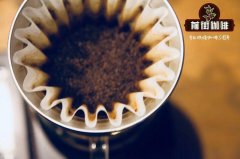Share the story about Kenyan Coffee share the parameters of hand flushing technique

Professional coffee knowledge exchange more coffee bean information please follow the coffee workshop (Wechat official account cafe_style)
Front Street Coffee-Kenya Coffee Story, Front Street Kenya asali hand sharing
If you have seen the Hollywood movie "out of Africa", you will know the story of Kenyan coffee. Kenya's coffee industry contributes about 0.2 per cent of GDP, accounting for about 8 per cent of total agricultural exports, and Kenya's coffee exports account for more than 90 per cent of production. Production reached a record 127000 tonnes in the 1987-88 season, compared with 47000 tonnes in the 2016 season, just 0.5 per cent of global coffee production. Small farmers account for 60% of the country's coffee production, the interests of middlemen erode, and many coffee farmers get only 20% of the export price of coffee beans. It's getting rarer and more precious.
Due to the low income from growing coffee, many coffee farmers began to switch to other cash crops. Kenyan coffee is grown by small farmers. After they harvest the coffee, they first send the fresh coffee beans to the cooperative cleaning station. The washing station sends the dried coffee to the cooperative in the form of "parchment coffee beans" (that is, coffee beans covered with endocarp) to the cooperative ("parchment coffee beans" is the last state of coffee beans before peeling). All the coffee is collected together, and the growers charge the average price according to their actual quality.
The Kenyan government takes the coffee industry very seriously, where it is illegal to cut down or destroy coffee trees. Kenyan coffee buyers are world-class high-quality coffee buyers, and no other country can grow, produce and sell coffee on a continuous basis like Kenya. All coffee beans are first acquired by the Kenya Coffee Commission (CoffeeBoardofKenya, CBK), where they are identified, graded, and then sold at weekly auctions, where they are no longer graded.
The Kenya Coffee Commission only acts as an agent to collect coffee samples and distribute them to buyers so that they can determine the price and quality. The auction in Nairobi is for private exporters, and the Kenya Coffee Commission pays growers a price below the market price.
Because the ribs of the V60 filter cup are distributed in a curved shape from top to bottom, and the length is different, the exhaust is more smooth and the flow rate is faster when brewing, and it is precisely because of this that the flavor level of the extracted coffee will be more obvious. In the brewing technique, the editor will use the method of segmented extraction to increase the extraction rate of beans.
Parameter & technique
Water temperature: 90 ℃; medium and fine grinding (BG 5R: pass rate of Chinese standard No. 20 sieve 58%); ratio of powder to water 1:15.
15 grams of powder, steam 30 grams of water for 30 seconds, water injection to 127 grams of sectional, and so on when the water level is about to reveal the separate bed, continue to water injection to 230 grams when the water cut off. (steaming start time) extraction time is 1: 52 "
[flavor] there are sour notes of Umei acid, lime, virgin fruit and berries, with spices, cream and cocoa in the middle, sweet brown sugar and juice, and the overall flavor is more layered.
END
Important Notice :
前街咖啡 FrontStreet Coffee has moved to new addredd:
FrontStreet Coffee Address: 315,Donghua East Road,GuangZhou
Tel:020 38364473
- Prev

Guatemala Vivette South Fruit Coffee Incht Manor Vivette Nan Fruit Coffee Flavor description
Professional coffee knowledge exchange more coffee bean information please follow the coffee workshop (Wechat official account cafe_style) Las Macadamias (manor) Huehuetenango is a traditional coffee producing area that produces high quality coffee beans. La Macadamias of La Libertad is an experimental farmer of El Injerto.
- Next

Learn about the origin of Kenyan coffee beans what's so special about the flavor of Kenyan coffee beans?
Professional coffee knowledge exchange more coffee bean information please follow coffee workshop (Wechat official account cafe_style) Front Street Coffee-Kenyan Coffee History and Flavor introduction the history of growing coffee beans in Kenya is only one hundred years ago. In the 20th century, Kenya began to develop the coffee industry on a large scale under the leadership of British and German colonists. Today, Kenyan coffee production units
Related
- Beginners will see the "Coffee pull flower" guide!
- What is the difference between ice blog purified milk and ordinary milk coffee?
- Why is the Philippines the largest producer of crops in Liberia?
- For coffee extraction, should the fine powder be retained?
- How does extracted espresso fill pressed powder? How much strength does it take to press the powder?
- How to make jasmine cold extract coffee? Is the jasmine + latte good?
- Will this little toy really make the coffee taste better? How does Lily Drip affect coffee extraction?
- Will the action of slapping the filter cup also affect coffee extraction?
- What's the difference between powder-to-water ratio and powder-to-liquid ratio?
- What is the Ethiopian local species? What does it have to do with Heirloom native species?

